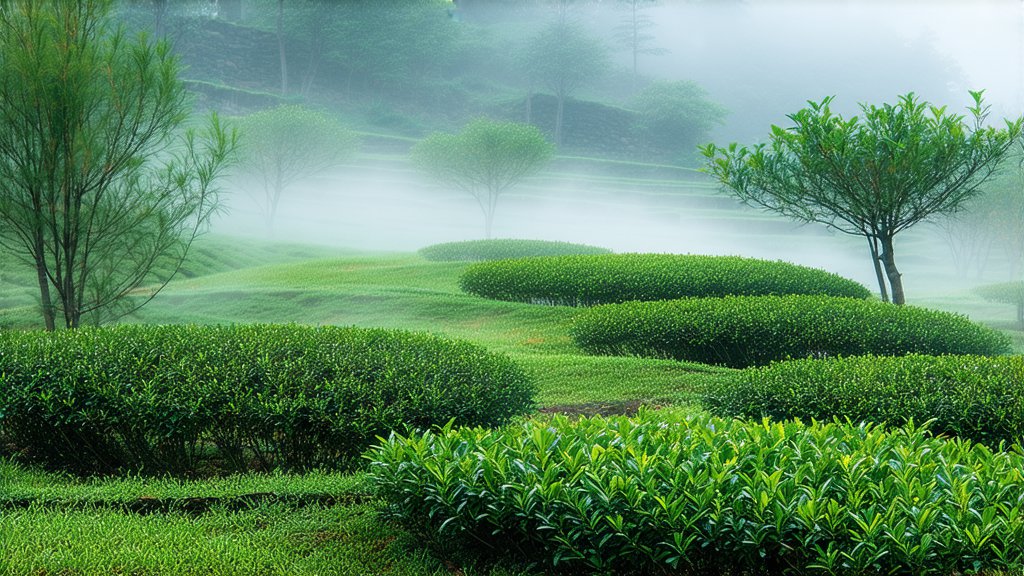
In the vast and diverse landscape of Chinese tea culture, where green, black, white, oolong, and pu-erh teas each boast their own legacies and devotees, there exists a lesser-known yet profoundly unique category—yellow tea, or Huangcha. Among its rarefied members, Junshan Yinzhen stands as a shining beacon, embodying the essence of this enigmatic genre with its distinctive flavor profile and meticulous craftsmanship. This article embarks on a journey to unravel the mysteries surrounding Junshan Yinzhen, delving into its historical roots, varieties, intricate production process, and the art of its appreciation.
A Historical Glimpse
The origins of yellow tea are shrouded in the mists of time, believed to have been discovered accidentally during the early stages of tea processing. According to legend, it was during the Tang Dynasty (618-907 AD) that tea makers left freshly picked leaves too long before firing, allowing them to undergo a natural oxidation process under humid conditions. This led to the formation of a unique yellowish hue and a sweeter, mellower taste, distinct from both green and black teas. Junshan Yinzhen, named after the Junshan Mountain in Hunan province where it is predominantly produced, has since become synonymous with this serendipitous discovery.
Varieties & Characteristics
Junshan Yinzhen primarily consists of two types: Junshan Silver Needle and Junshan Maojian. Both share the common traits of being plucked from the tender shoots and buds of the Camellia sinensis plant but differ in their processing and appearance.
-
Junshan Silver Needle: As the name suggests, these are slender, needle-like leaves adorned with silvery downy hairs, reminiscent of fine brocade threads. They are prized for their delicate aroma and subtle sweetness.
-
Junshan Maojian: Comprising slightly more mature leaves, these have a more robust character while still maintaining the characteristic yellow tea smoothness and a touch of floral notes.
The Art of Crafting Junshan Yinzhen
The production of Junshan Yinzhen is an art form that requires precision and patience. Here’s a glimpse into its intricate journey from leaf to cup:
-
Harvesting: Only the youngest leaves and buds are selected, typically in early spring when they are at their freshest and most nutrient-rich.
-
Spreading and Withering: The freshly picked leaves are spread out thinly to allow for slow withering under controlled humidity and temperature. This step initiates a gentle oxidation process.
-
Fixation: Unlike green tea's rapid high-heat fixation, yellow tea undergoes a milder heat treatment that halts further oxidation while preserving its unique yellow color.
-
Wrapping and Humidifying: The hallmark of Junshan Yinzhen production involves wrapping the leaves in bamboo mats or cloth and storing them in a humid environment for several days. This encourages microbial activity, enhancing the tea's sweetness and mellowness.
-
Drying: Finally, the leaves are dried slowly to remove excess moisture, ensuring stability and longevity without compromising flavor.
Savoring Junshan Yinzhen: A Sensory Experience
To truly appreciate Junshan Yinzhen, one must engage all senses in the ritual of tea tasting:
-
Visual Appreciation: Observe the dry leaves for their silvery sheen and the infusion for its golden-yellow hue, a testament to the tea's gentle oxidation.
-
Aromatic Evaluation: Inhale deeply to detect the subtle fragrance, which may range from light floral notes to hints of honey or melon.
-
Tasting: Sip slowly, allowing the tea to coat your palate. Notice the initial sweetness that gradually gives way to a complex medley of flavors, including vegetal undertones and a lingering aftertaste that speaks of its unique processing method.
-
Texture: Feel the silky texture of the liquid, a testament to the careful handling of the leaves throughout the production process.
In conclusion, Junshan Yinzhen offers not just a beverage but an experience steeped in history, craftsmanship, and sensory delight. It invites tea enthusiasts worldwide to explore the depths of Chinese tea culture and discover the hidden gems within its golden embrace.